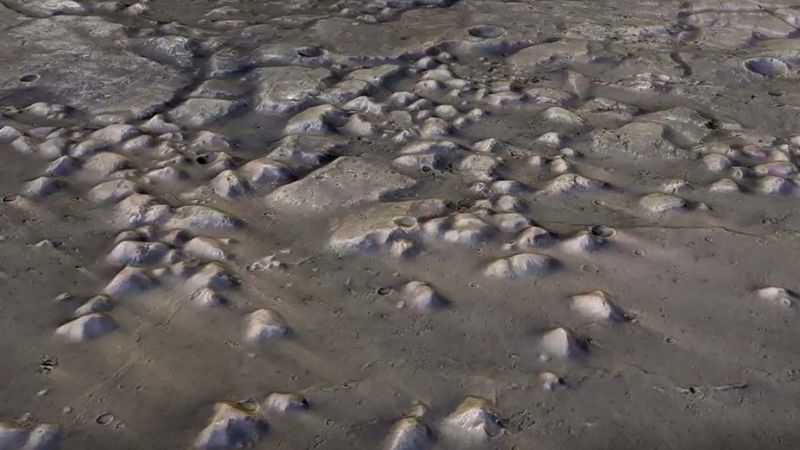Recent studies have uncovered intriguing evidence regarding the geological features of Mars, specifically within a region known as Chryse Planitia. Thousands of mysterious mounds spread across this lowland area hint at a time when the red planet was shaped by the presence of water billions of years ago. A significant exploration of these mounds has drawn interest from scientists eager to piece together the planet’s complex history.
The Chryse Planitia region is home to over 15,000 mounds, and these intriguing formations extend across an expansive landscape comparable in size to Texas. This geological phenomenon is notably situated at a natural divide between Mars’ northern and southern hemispheres, presenting a stark contrast in their features. Scientists have long been puzzled by these mounds, unsure of their origins and how they came to be.
According to a study published in the esteemed journal Nature Geoscience on January 20, recent analyses of images captured by NASA and European Space Agency orbiters have revealed that these mounds serve as vital “time capsules.” They preserve layers of rock that record significant events in Mars’ history, particularly the effects of erosion caused by water that existed around 4 to 3.8 billion years ago. Dr. Joe McNeil, a planetary scientist at the Natural History Museum in London and lead author of the study, likened the different layers within each mound to pages of a book, where the oldest rocks lie at the base, exploring the story of Mars over eons.
These mounds are positioned near the landing site of the upcoming European Space Agency’s ExoMars Rosalind Franklin rover, which is set to launch in 2028. The rover holds the potential to further investigate these intriguing structures, offering the opportunity to uncover more about ancient water flow on Mars and aid in identifying resources for possible future human exploration.
McNeil’s team utilized data collected by orbiters, equipped with advanced cameras and sensors, allowing them to examine the geological composition of the mounds closely. While these formations initially appeared monotonous from afar, high-resolution imagery revealed an impressive variation in their structure, differentiating them from earthly landmarks like the buttes and mesas of Monument Valley.
The immense scale of these Martian mounds is striking; they can reach up to 1,800 feet tall, dwarfing the 1,000-foot height of many formations found in Monument Valley and spanning an area 2,000 times larger. However, unlike the relatively younger formations on Earth, these mounds have existed for billions of years, suggesting they could be the last vestiges of ancient highlands modified by extensive erosion.
McNeil and his colleagues’ findings indicate that the presence of water played a crucial role in shaping the Martian surface. Their study shows that the predominance of clay-rich rock layers unveils evidence of a significant water presence in the region, inviting further speculation about the geologic processes that occurred. The possibility of rivers or lakes contributing to this erosion remains an open question that scientists are eager to nail down, despite the challenges posed by the long-term effects of both water and wind erosion over billions of years.
Within the context of this research, intriguing theories have emerged regarding the origins of Mars’ geographical divide, known as the Martian dichotomy. This natural boundary separates the deep northern plains from the rugged southern highlands, and ongoing research continues to explore possibilities regarding its formation—whether through huge impact events early in the planet’s history or mantle-driven tectonic processes.
Dr. McNeil’s insights into the significance of the mounds—as a potential source of information regarding ancient life and conditions on Mars—present a promising avenue for future exploration. The mounds themselves could help reveal how the Martian environment evolved and the extent to which it may have been habitable.
The future missions to Mars, particularly those aiming to reach the landing site of the ExoMars rover, will be crucial in answering these lingering questions. The robotic exploration team remains hopeful that they will uncover vital clues about Mars’ past, enhancing our understanding of the planet’s history and its potential for hosting life. As scientists continue to explore the unique geology of this region, they hope to unlock the mysteries of Mars and, perhaps, shed light on the broader narrative of planetary evolution in our solar system.











